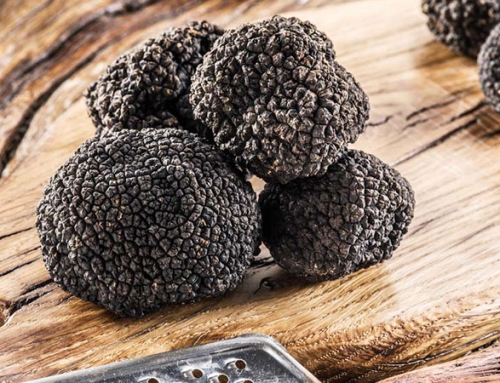The topinambour – also called Jerusalem artichoke, earth apple, sun-root, sunchoke – belongs to the Compositae (sunflower) family of plants. It is native to eastern North America.
In Australia, it is available in autumn and early winter. It can be eaten raw or cooked.
The topinanbour is known for its excellent nutritional characteristics:
- It has a high potassium content (100 grams of topinambur contain 429 milligrams of potassium, against 358 of banana)
- Due to the high content of inulin (from 7% to 30% depending on the variety) it makes it a great food for diabetics, with a glycemic index of 50. The inulin works as a carbohydrate reserve (replacing the starch) independently of insulin. Note: The Inulin is a soluble fiber that passes through the human digestive system until bacteria go to work on it in the colon.
- Does not contain cholesterol.
- It is naturally gluten free
- It is particularly suitable for those who want to lose weight and reactivate the lazy intestine. The topinambur is able to lower the level of sugar and fat absorption by the intestine, thus controlling glycemic levels and cholesterol.
Chemical composition:
Water 78.9%
Protein 2%
Sugars 9.6%
Fat 0.01%
Fibre 1.6%
Minerals:
potassium, magnesium, iron, phosphorus, calcium, sodium, copper, manganese, selenium and zinc.
Vitamins:
Vitamin A, Vitamins B1, B2, B3, B5, B6, Vitamin C, Vitamin E and K. Contains beta-carotene.
The sweet flavour of the artichokes and topinambour comes from the inulin, but unfortunately it releases a lot of gas in the digestive process , so it is not recommended for people suffering from IBS.
To limit this disadvantage, it is better to start with a small portion of topinambour, to let the stomach get used it, then gradually increase the amount you eat.
Check our recipe Chicken Thigh with mash Topinambour
Wikipedia tells us this, about the naming of the Jerusalem artichoke:
“Despite its name, the Jerusalem artichoke has no relation to Jerusalem, and it is not a type of artichoke, though the two are distantly related as members of the daisy family. The origin of the ‘Jerusalem’ part of the name is uncertain. Italian settlers in the United States called the plant girasole, the Italian word for sunflower, because of its resemblance to the garden sunflower (both plants are members of the genus Helianthus). Over time, the name girasole (pronounced closer to [d͡ʒiraːˈzul] in southern Italian dialects) may have been changed to Jerusalem.[9] The English later corrupted girasole artichoke (meaning, “sunflower artichoke”) to Jerusalem artichoke. Another explanation for the name is that the Puritans, when they came to the New World, named the plant with regard to the ‘New Jerusalem’ they believed they were creating in the wilderness.[7] There have also been various other names applied to the plant, such as the French or Canada potato, topinambour, and lambchoke. Sunchoke, a name by which it is still known today, was invented in the 1960s by Frieda Caplan, a produce wholesaler who was trying to revive the plant’s appeal.[7] The artichoke part of the Jerusalem artichoke’s name comes from the taste of its edible tuber. Samuel de Champlain, the French explorer, sent the first samples of the plant to France, noting its taste was similar to that of an artichoke.[citation needed]
The name topinambour, in one account, dates from 1615, when a member of the Brazilian coastal tribe called the Tupinambá visited the Vatican at the same time that a sample of the tuber from Canada was on display there, presented as a critical food source that helped French Canadian settlers survive the winter. The New World connection resulted in the name topinambour being applied to the tuber, the word now used in French, German, Italian, Romanian, Russian, and Spanish.”





